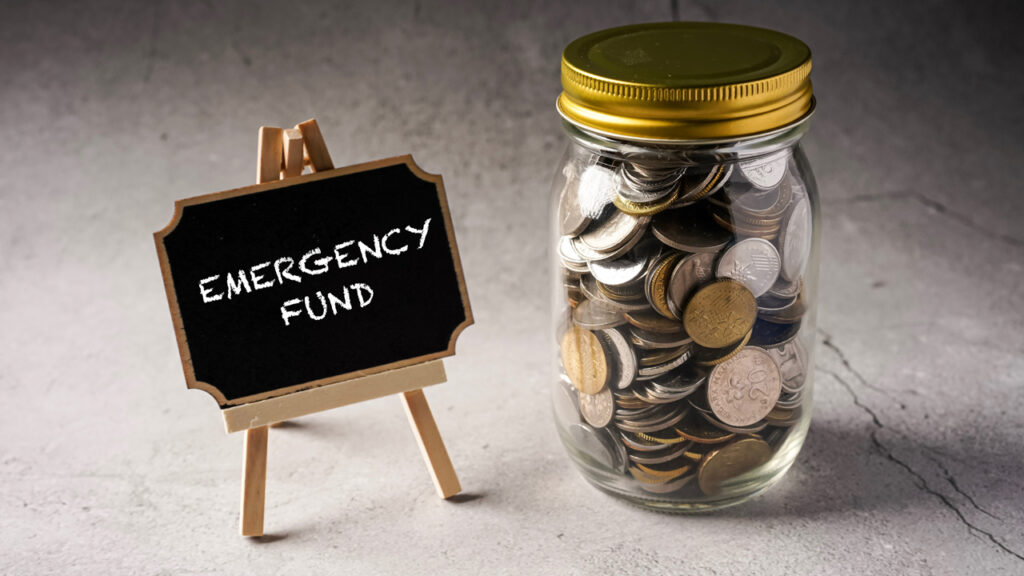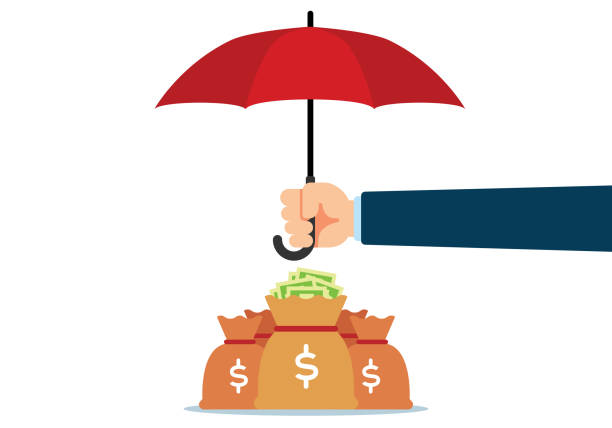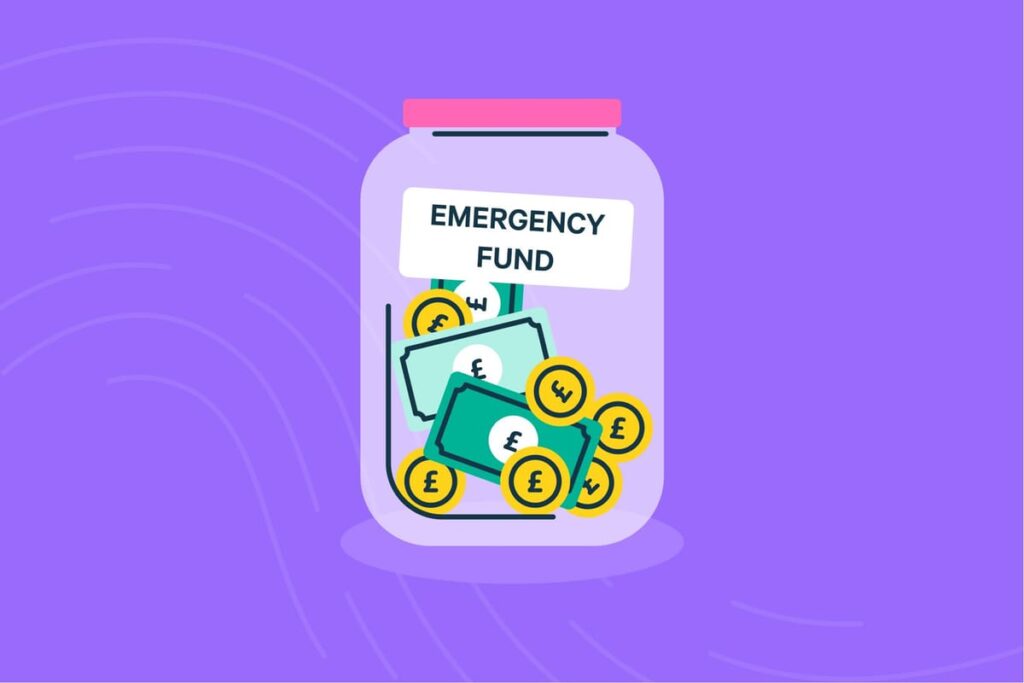The unexpected is a universal constant. A sudden car repair, an unforeseen medical bill, or a temporary job loss—these events don’t send a calendar invite. In the face of life’s unpredictable curveballs, an emergency fund acts as your financial fortress, preventing a stressful situation from spiraling into a debilitating debt crisis.
For many, building a robust emergency fund—often recommended to cover three to six months of living expenses—feels like scaling a financial Everest. The sheer size of the goal can lead to “savings paralysis,” where you’re so overwhelmed that you never even start.
The good news? You don’t have to conquer the mountain in a single leap. You can start today, right where you are, with simple, small, and sustainable steps. This detailed guide will show you practical, stress-free ways to kickstart your financial safety net and build momentum toward true financial peace.
1. The Power of the “Micro-Goal”
Forget the daunting target of three or six months of expenses for now. That’s the finish line, not the starting block. The primary reason people fail to start is aiming too high initially.
The First Simple Step: The $1,000 Starter Fund.
Your first, most crucial goal is to save a “Mini-Fund” of $1,000 (or the equivalent in your local currency). This initial cushion is enough to handle most small-to-medium emergency expenses, like an appliance failure, an unexpected vet visit, or a flight home for a family emergency.
- Actionable Tip: Write this goal down. Don’t write “$10,000 Emergency Fund.” Write “$1,000 Mini-Fund by Date3monthsfromnow”. A specific, achievable target creates a clear path and makes the goal feel real.
2. Automate Your Way to Success (The “Set It and Forget It” Method)
The most effective savings strategy is one that eliminates human error—and human temptation. If you wait until the end of the month to save what’s left, you’ll inevitably find there is nothing left.
The Second Simple Step: Pay Your Future Self First.
Treat your emergency fund contribution like any other non-negotiable bill (like rent or a mortgage payment).
- Actionable Tip: Set up an automatic transfer from your checking account to your dedicated savings account to occur immediately after every payday. Start with a tiny amount—even $25 or $50 per paycheck. The amount is less important than the consistency. You’ll quickly get used to living without that small amount, and your fund will grow without you actively thinking about it.
3. Find the “Phantom Money” in Your Budget
Many people assume they need to dramatically change their lifestyle to save, but the truth is, most budgets are leaking money in unnoticed, non-essential areas. This “phantom money” is the simplest source of quick emergency fund contributions.
The Third Simple Step: The Subscription & Service Audit.
Grab your last three bank or credit card statements and highlight every recurring monthly expense.
- Identify the Non-Essentials: Are you paying for streaming services you rarely watch? Do you have a gym membership you haven’t used in months? Is there a subscription box or app you forgot you signed up for?
- The Immediate Injection: Cancel just one or two of these services. If you cancel two $15 subscriptions, you’ve just freed up $30 a month, which is $360 a year, that can be instantly directed to your emergency fund. This is money you were already spending, so you won’t feel the pinch of “saving.”
4. Harness the Power of “Found Money”
“Found money” is any unexpected windfall that isn’t part of your regular income. This is often the easiest and fastest way to inject significant cash into your emergency fund. Since this money was unexpected, putting it directly into savings doesn’t feel like a deprivation.
The Fourth Simple Step: The “Windfall Firewall.”
Create a rule now: any unexpected cash goes straight into your emergency fund.
- Windfall Examples: Tax refunds, work bonuses, cash gifts for birthdays or holidays, money back from a cancelled service, or selling an old item.
- Actionable Tip: Don’t let it touch your checking account for long. If your tax refund hits, transfer 50% or more of it to your emergency fund the same day. The less time “found money” spends in your spendable balance, the less likely you are to spend it.
5. Get Strategic with Your Savings Account
Where you keep your money matters. Your emergency fund needs to be accessible but not too accessible. It should also be working for you.
The Fifth Simple Step: Separate and Elevate.
- Open a High-Yield Savings Account (HYSA): Do not keep your emergency fund in the same bank where you have your daily checking account. A HYSA is separate, physically moving the money out of sight and out of mind, reducing temptation. Crucially, a HYSA offers a significantly higher interest rate than a standard savings account, meaning your fund grows faster with passive income.
- Link, Don’t Co-Locate: Link your HYSA to your main checking account for easy transfers, but ensure it takes a day or two to move money. This slight friction acts as a “cooling-off period” to stop you from making impulse withdrawals.
6. The “Challenge” Method: Gamify Your Savings
Saving money can be boring, but it doesn’t have to be. By turning saving into a game, you increase motivation and stick-to-itiveness.
The Sixth Simple Step: Try a 52-Week or $5 Challenge.
- The 52-Week Challenge: Save $1 the first week, $2 the second, and so on, up to $52 on the last week. At the end of the year, you will have saved $1,378. This is a perfect way to blast past your initial $1,000 goal.
- The $5 Challenge: Every time you receive a $5 bill (or another denomination of your choice) as change, put it straight into a dedicated jar or bank envelope. You’ll be amazed how quickly a jar of fives turns into hundreds of dollars. The small, visual nature of this challenge provides instant gratification and keeps you engaged.
Your Next Steps: Building Momentum
Starting is the hardest part. Once you have your Mini-Fund of $1,000, you’ve successfully created a financial shield and built the muscle of a saving habit.
Your next steps are simply to double down on consistency:
- Increase Your Automation: Can you increase your automatic transfer from $50 to $75 next month? Challenge yourself to make one small increase every three months.
- Redirect Debt Payments: Once you pay off a small debt (like a credit card or small loan), immediately re-route the entire monthly payment amount to your emergency fund. This money is already out of your budget, so you won’t miss it, and your savings will surge.
An emergency fund isn’t a luxury for the financially gifted; it’s a necessity for everyone. By embracing micro-goals, automation, and finding the “phantom money” in your budget, you can start today and begin your no-stress journey to financial resilience. The simplest action you can take is the most powerful: start small, but start now.




